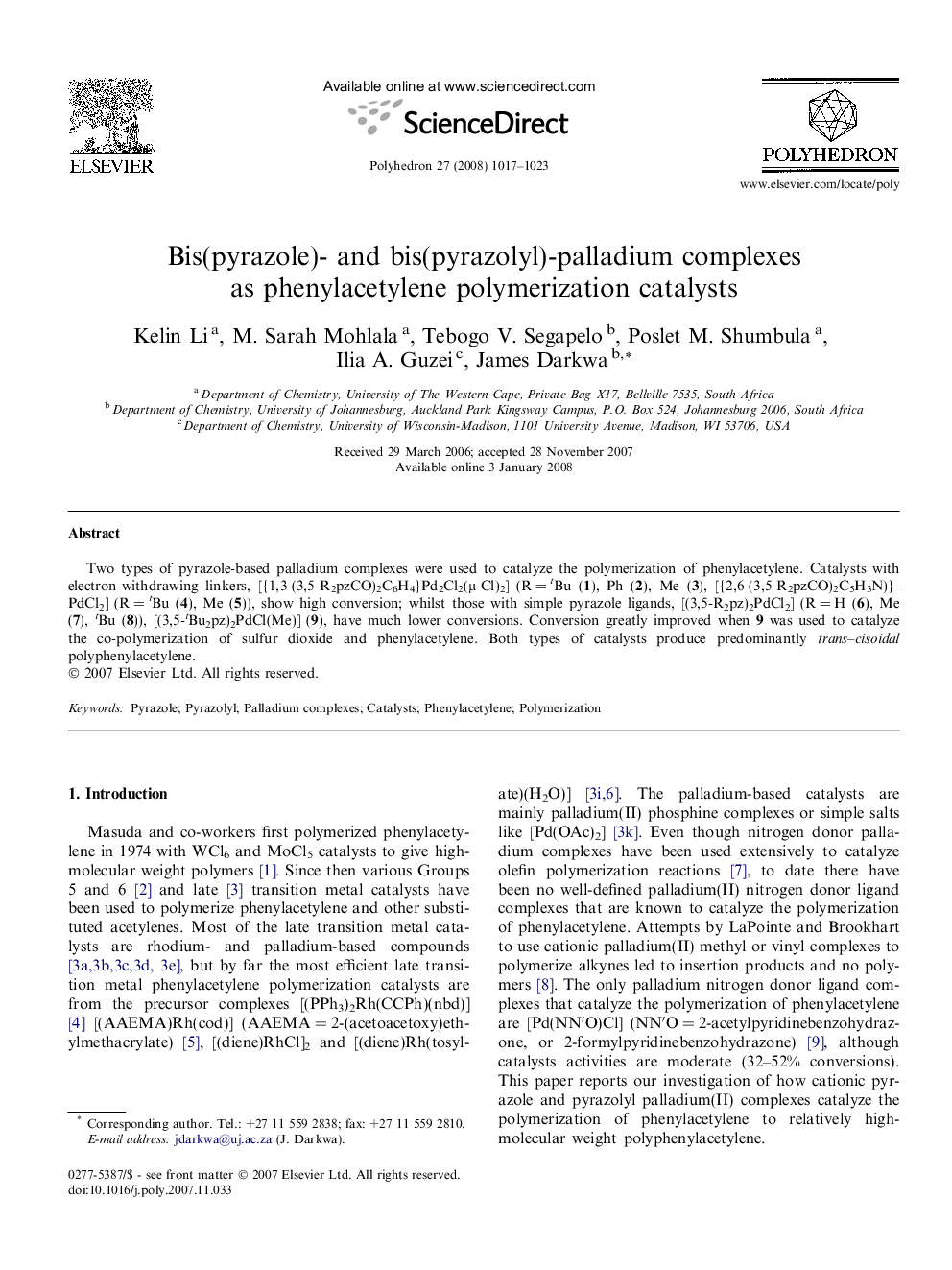| کد مقاله | کد نشریه | سال انتشار | مقاله انگلیسی | نسخه تمام متن |
|---|---|---|---|---|
| 1340715 | 979747 | 2008 | 7 صفحه PDF | دانلود رایگان |

Two types of pyrazole-based palladium complexes were used to catalyze the polymerization of phenylacetylene. Catalysts with electron-withdrawing linkers, [{1,3-(3,5-R2pzCO)2C6H4}Pd2Cl2(μ-Cl)2] (R = tBu (1), Ph (2), Me (3), [{2,6-(3,5-R2pzCO)2C5H3N)}PdCl2] (R = tBu (4), Me (5)), show high conversion; whilst those with simple pyrazole ligands, [(3,5-R2pz)2PdCl2] (R = H (6), Me (7), tBu (8)), [(3,5-tBu2pz)2PdCl(Me)] (9), have much lower conversions. Conversion greatly improved when 9 was used to catalyze the co-polymerization of sulfur dioxide and phenylacetylene. Both types of catalysts produce predominantly trans–cisoidal polyphenylacetylene.
Syntheses and crystal structure of the pyrazolyl complex of the type [1,3-{3,5-R2pzCO}2C6H4PdCl2(μ-Cl)2] (R = tBu (1), Ph (2), Me (3)) and general application of these type of complexes in phenylacetylene polymerization is described. Two new compounds 1,3-(3,5-Ph2pzCO)2C6H4 (L1) and its corresponding complex [1,3-{3,5-Ph2pzCO}2C6H4PdCl2(μ-Cl)2] (2) were synthesized. Both compounds have structures that are monoclinic, with space group P21/n. This and similar pyrazolyl palladium complexes can be activated to catalyze the polymerization of phenylacetylene.Figure optionsDownload as PowerPoint slide
Journal: Polyhedron - Volume 27, Issue 3, 26 February 2008, Pages 1017–1023